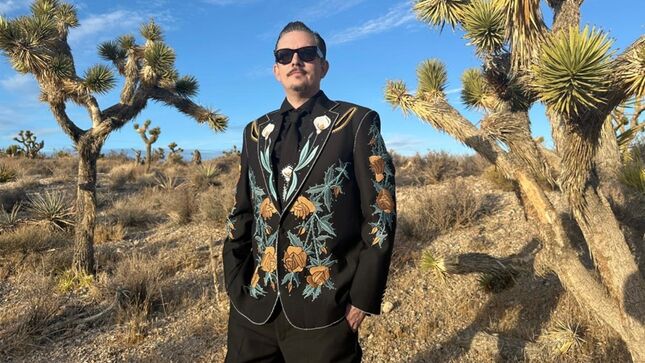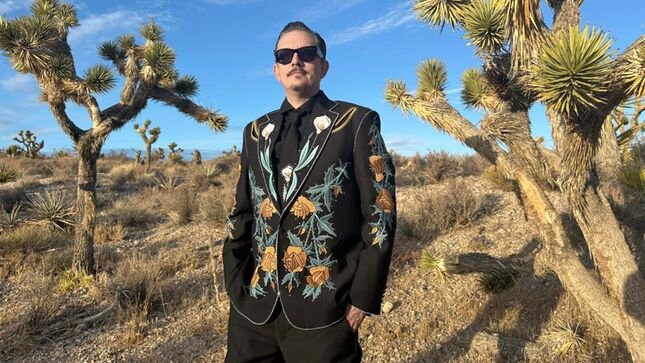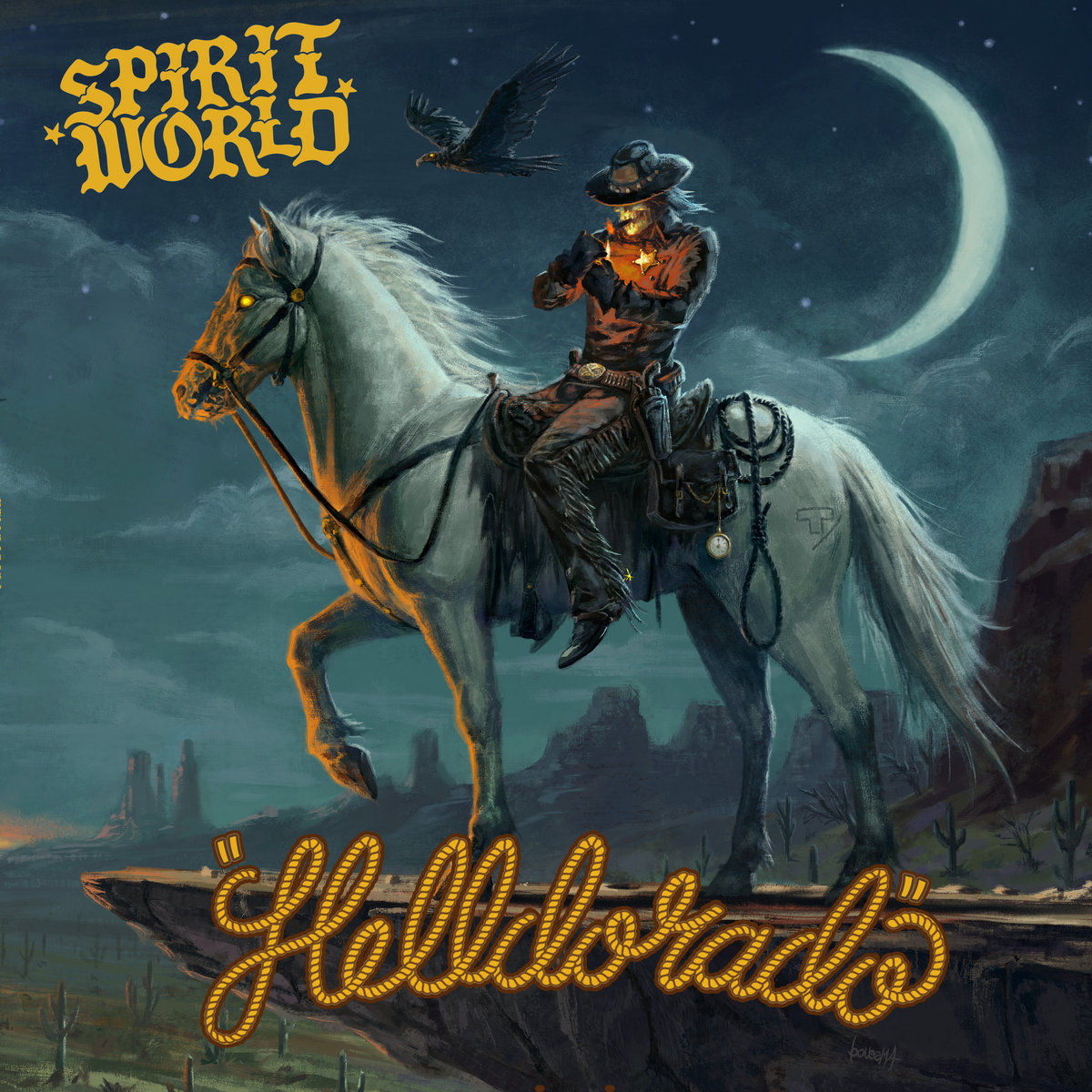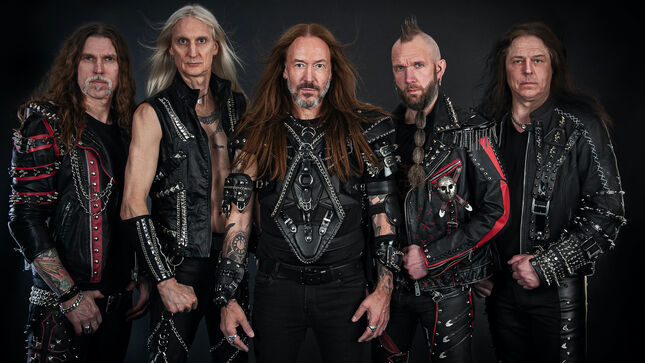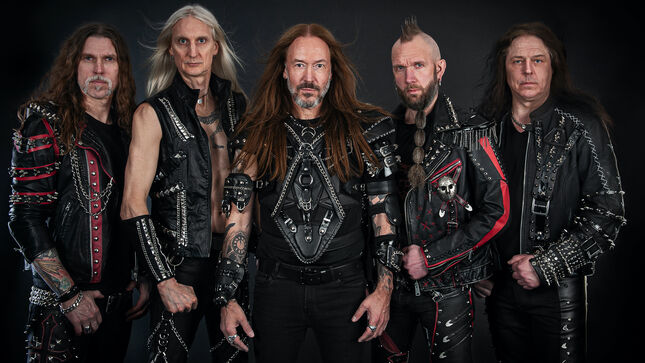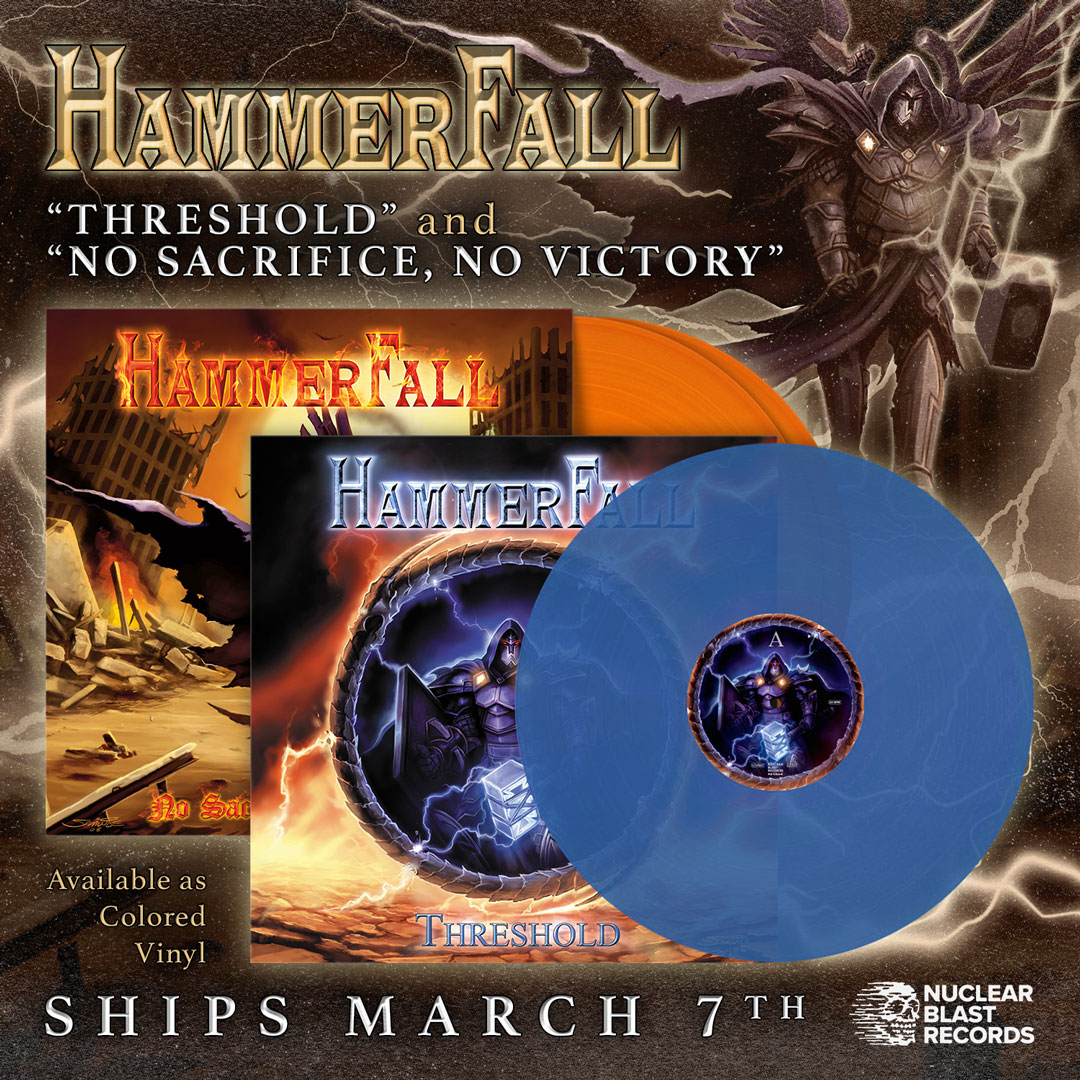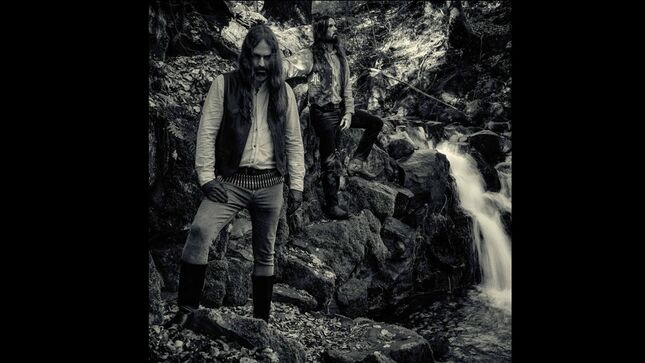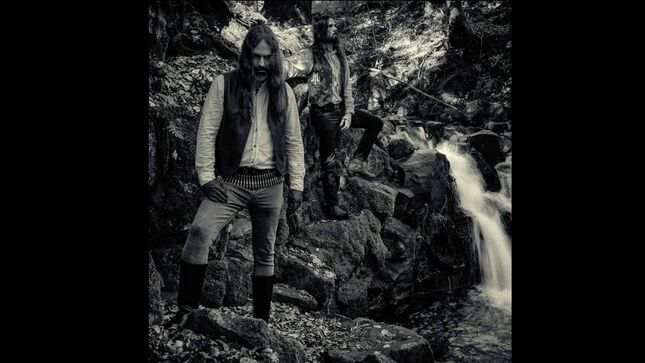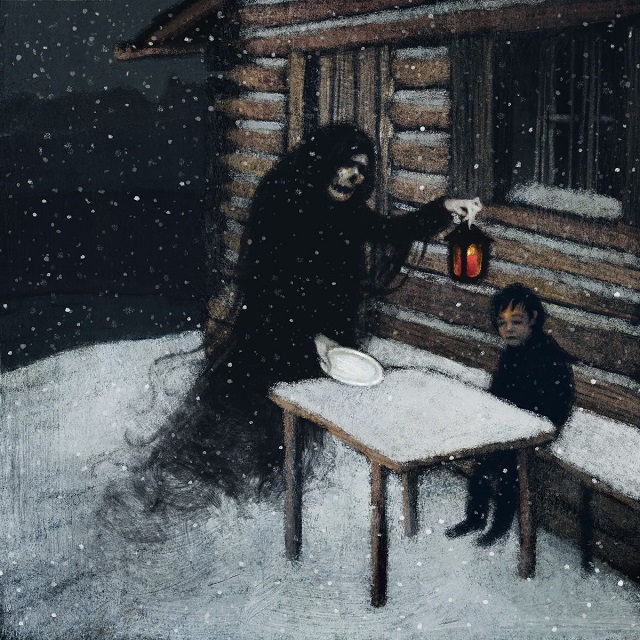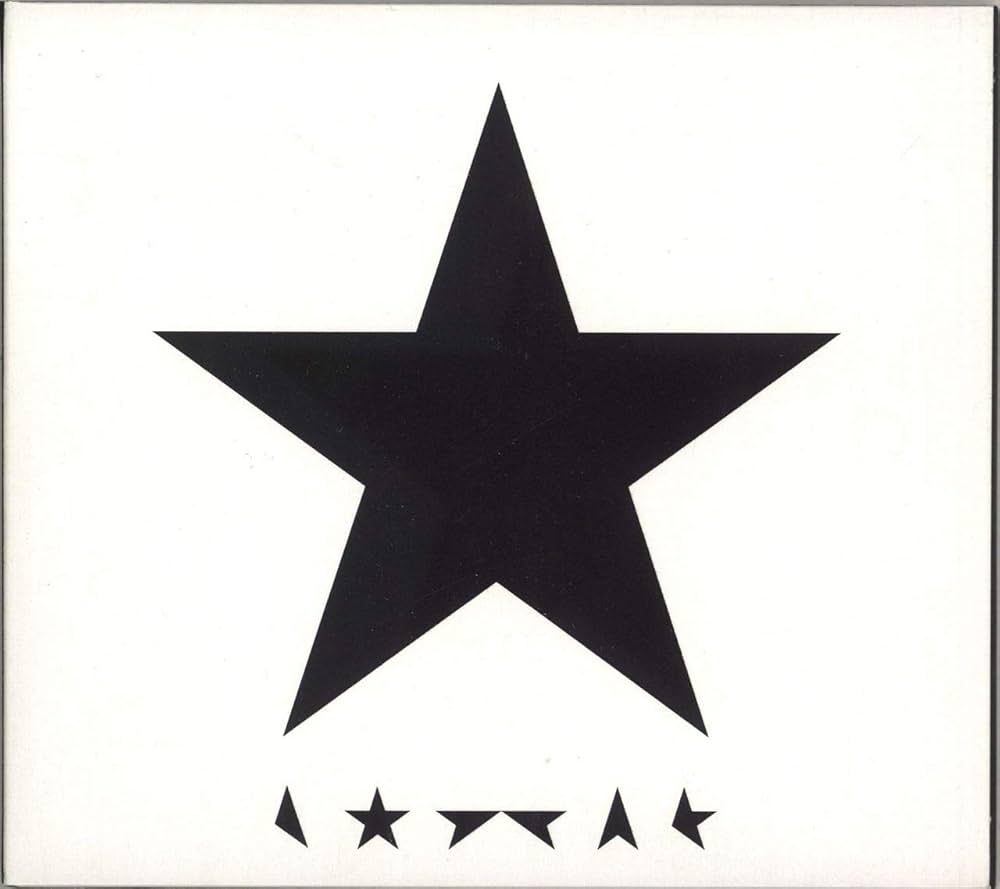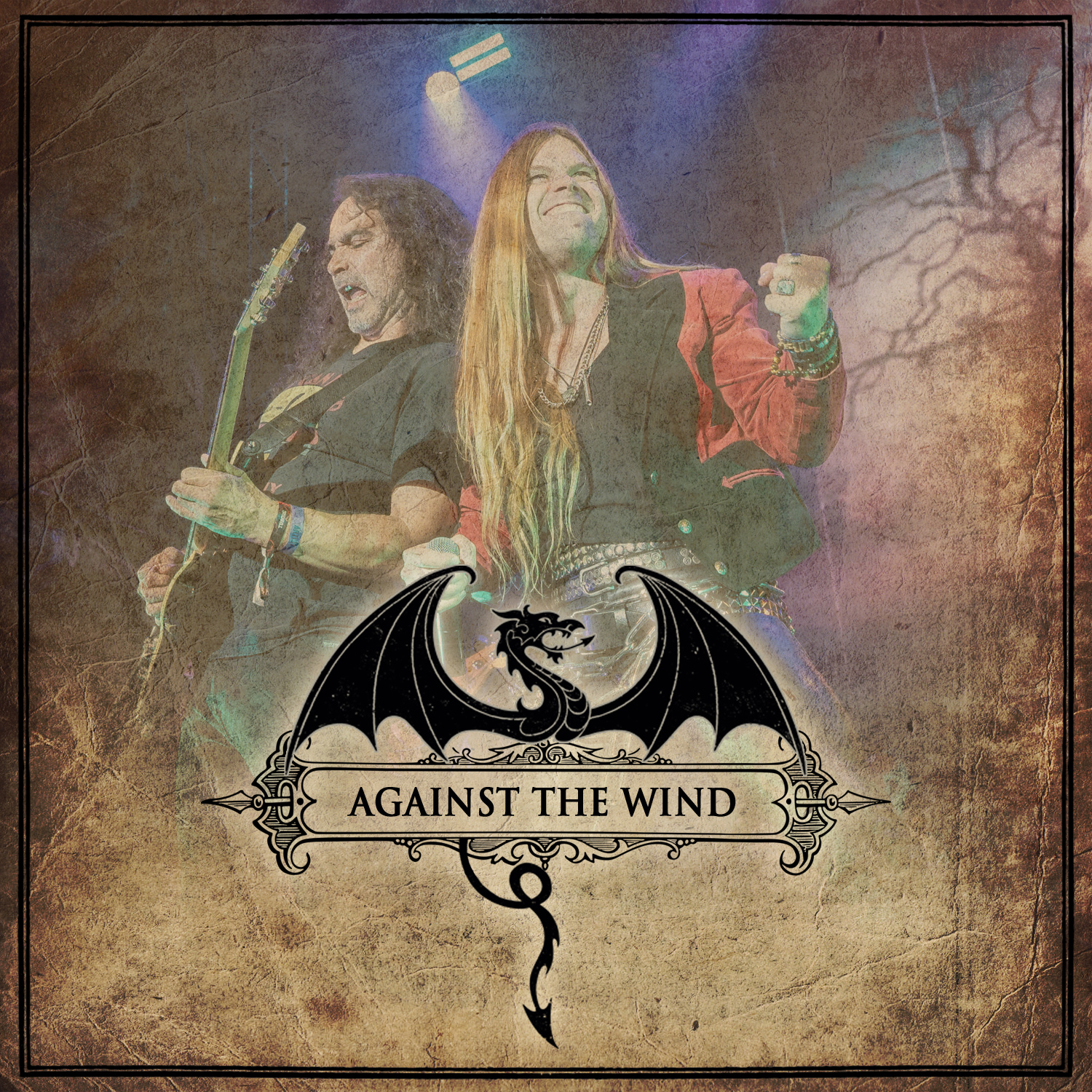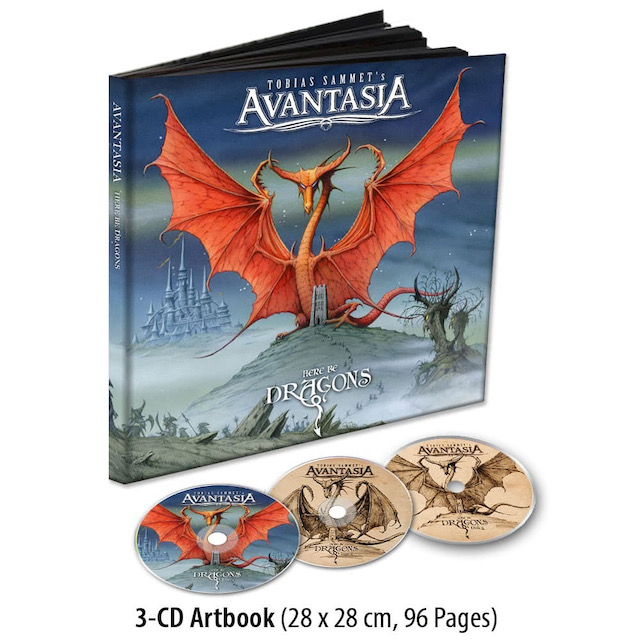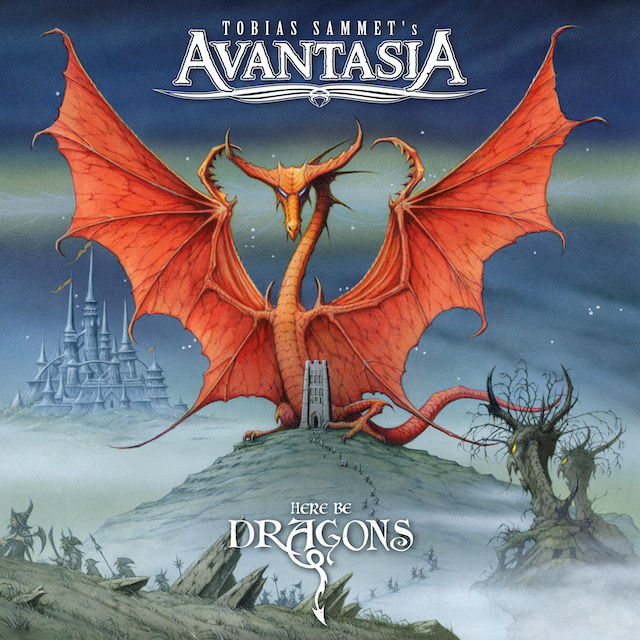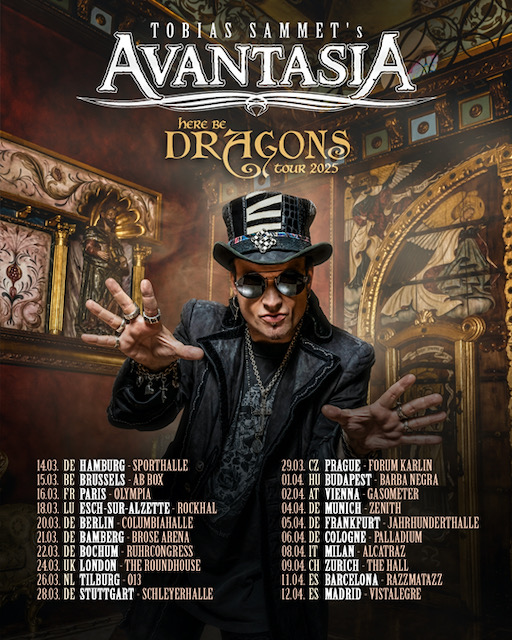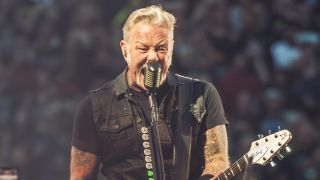
Feature Photo: Geoffrey Clowes-Shutterstock.com
Each song on this list demonstrates a unique way that “thing” has shaped the landscape of rock music, proving that even the smallest words can carry immense weight in the right hands. Sammy Hagar’s “Things’ve Changed” reflects on the passage of time with an honest rawness that perfectly blends introspection with a driving rock rhythm. Paul McCartney’s “Get On the Right Thing” showcases his ability to craft uplifting melodies, infusing optimism into his trademark dynamic arrangements. Marvin Gaye and Tammi Terrell’s duet “Ain’t Nothing Like the Real Thing” pairs heartfelt lyrics with Motown magic, highlighting their unparalleled chemistry. The Yardbirds’ “Shapes of Things” brought a socially conscious edge to the British Invasion, fusing thought-provoking lyrics with innovative guitar work.
Electric Light Orchestra’s “Livin’ Thing” marries orchestral grandeur with a reflective look at love and life, epitomizing Jeff Lynne’s gift for storytelling through sound. The Troggs’ “Wild Thing” remains a primal anthem of rock, capturing the raw energy of youthful passion in just a few unforgettable chords. David Bowie’s “Oh! You Pretty Things” challenges listeners with its existential depth, delivering a profound commentary on human evolution through a deceptively catchy melody.
# 10 – Things’ve Changed – Sammy Hagar
Even though the song’s verse always sounded like the song “Night Moves” by Bob Seger, Sammy delivered a great one in 2002 with this very cool tune song called “Things’ve Changed.” Recorded at Red Rocker Studio in Northern California, the track was co-produced by Hagar and Bob Daspit, capturing the cohesive energy of Hagar’s band, The Waboritas. Hagar’s commanding vocals and rhythm guitar are complemented by Vic Johnson’s fiery lead guitar, Mona Gnader’s steady bass grooves, and David Lauser’s driving drum performance. The track’s straightforward rock arrangement underscores the sincerity of its themes, but it does not include a trumpet solo or brass instrumentation, staying true to Hagar’s signature style.
Lyrically, the song navigates the emotional terrain of accepting change while longing for the familiarity of the past. Lines such as “If I could get down on my knees and pray, I’ll never get back to yesterday” reveal a tension between nostalgia and the reality of moving forward. Hagar pairs personal anecdotes, like “standing in Norfolk, Virginia, wondering if you still got it in ya,” with universal themes of resilience and self-discovery. The chorus, with its repeated assertion that “things have changed,” drives home the inevitability of transformation while urging listeners to adapt and persevere.
Although Not 4 Sale was not a commercial juggernaut, “Things’ve Changed” resonates as a deeply personal and relatable track, highlighting Hagar’s ability to infuse his music with both heart and grit. The song’s reflective tone contrasts with the unbridled passion of other songs on this list, offering a grounded perspective on life’s twists and turns. It captures the universal struggle of reconciling the past with the present, making it a fitting introduction to this collection.
“Things’ve Changed” stands as a powerful opening to this list, embodying themes of growth and adaptation through Hagar’s honest and compelling storytelling. With its balance of rock energy and introspection, the song paves the way for a deeper exploration of how “things” can serve as a metaphor for life’s ever-shifting landscape in music.
Read More: Why Rock Fans Love Sammy Hagar
# 9 – Get On The Right Thing – Paul McCartney
Paul McCartney’s “Get On The Right Thing,” featured on his 1973 album Red Rose Speedway, showcases his gift for crafting vibrant, uplifting melodies paired with emotionally resonant lyrics. Originally recorded during the sessions for Ram in 1971 at CBS Studios in New York and Abbey Road Studios in London, the song highlights McCartney’s fluid approach to integrating older material into new projects. Produced by McCartney and featuring members of Wings—Linda McCartney on keyboards and backing vocals, Denny Laine on guitar, Henry McCullough on guitar, and Denny Seiwell on drums—the track is a high-energy blend of rock and soul influences. Though “Get On The Right Thing” does not feature a trumpet solo, the song’s dynamic arrangement, bolstered by McCartney’s powerful vocal delivery and layered instrumentation, captures a celebratory spirit.
The lyrics of “Get On The Right Thing” are steeped in optimism, urging listeners to embrace love and positivity as guiding forces in life. The refrain, “Try a little love, you can’t go wrong, get on the right thing,” underscores the song’s central message of choosing the right path through emotional connection and trust. The verses evoke imagery of transformation and clarity, as in “All at once you get love on your mind, and your world is as kind as a penny,” painting a vivid picture of how love can reshape perception and direction. This thematic focus complements Sammy Hagar’s reflective “Things’ve Changed,” though McCartney’s take leans more toward unbridled hope and encouragement.
Critically, Red Rose Speedway received mixed reviews upon release, but tracks like “Get On The Right Thing” have been revisited as examples of McCartney’s ability to balance elaborate production with heartfelt simplicity. The song’s infectious energy and layered arrangement lend it an enduring appeal, even as it remains one of the less-discussed gems in McCartney’s expansive catalog. The spirited vocal harmonies, intricate instrumentation, and lyrical positivity make it a natural fit for this list, capturing the transformative potential of “things” when paired with love and intention.
“Get On The Right Thing” is a dynamic and uplifting addition to this collection, embodying themes of self-discovery and the redemptive power of love. Its vibrant energy and optimistic message set it apart, offering a musical reminder that the right thing is often within reach when approached
Read More: Complete List Of Paul McCartney & Wings Albums And Songs
# 7 – Ain’t Nothing Like The Real Thing – Marvin Gaye & Tammi Terrell
Marvin Gaye and Tammi Terrell’s “Ain’t Nothing Like the Real Thing” is an enduring testament to the power of love and authenticity, delivered through one of Motown’s most iconic duets. Written and produced by the legendary songwriting team of Nickolas Ashford and Valerie Simpson, the song was recorded at Hitsville U.S.A. (Motown’s iconic Detroit studio) in 1967 and released in 1968 on the album You’re All I Need. The recording features the Funk Brothers as the instrumental backbone, with James Jamerson’s signature basslines and Earl Van Dyke’s dynamic keyboard work infusing the track with soulful energy. While the track does not include a trumpet solo, the layered arrangement of strings and horns complements the lush vocals, elevating the emotional resonance of the song.
Lyrically, “Ain’t Nothing Like the Real Thing” reflects on the irreplaceable connection between two people in love, contrasting physical presence with substitutes like photographs and memories. The opening lines, “I’ve got your picture hangin’ on the wall, but it can’t see or come to me when I call your name,” underscore the central theme of longing and the insufficiency of stand-ins for genuine affection. Gaye and Terrell’s harmonies bring the lyrics to life, their voices seamlessly intertwining to convey both vulnerability and joy. The repeated refrain, “Ain’t nothing like the real thing,” emphasizes the irreplaceable nature of true connection, echoing the song’s timeless appeal.
Critically, the song cemented Gaye and Terrell’s status as one of Motown’s most beloved duos, reaching number one on the Billboard Hot R&B Singles chart and number eight on the Billboard Hot 100. Its impact endures not only because of its chart success but also due to its emotional depth and the undeniable chemistry between its performers. Compared to other entries on this list, such as Paul McCartney’s optimistic “Get On The Right Thing,” this song leans into the soulful ache of love’s necessity, providing a heartfelt counterpoint to tracks that focus on personal transformation.
“Ain’t Nothing Like the Real Thing” is a masterclass in the art of the duet, blending emotional honesty with impeccable vocal and instrumental performances. Its inclusion in this list highlights the profound ways that “things” can symbolize what is most precious in life, offering a moving exploration of love’s irreplaceable power.
Read More: Top 10 Marvin Gaye And Tammi Terrell Songs
# 6 – Shape Of Things – The Yardbirds
The Yardbirds’ “Shapes of Things” is a groundbreaking piece of psychedelic rock that fused innovative musicianship with pointed social commentary. Released as a single in February 1966 and later included on various compilations, the song was recorded at Chess Studios in Chicago and Columbia Studios in Hollywood. Produced by Giorgio Gomelsky, it features Jeff Beck’s pioneering guitar work, Keith Relf’s evocative vocals, Chris Dreja on rhythm guitar, Paul Samwell-Smith on bass, and Jim McCarty on drums. The track’s experimental nature, combined with its thought-provoking lyrics, helped solidify The Yardbirds’ reputation as trailblazers of the 1960s rock scene. While there is no trumpet solo in the recording, the dynamic interplay of Beck’s fuzz-toned guitar and McCarty’s rhythmic precision creates a sense of urgency that mirrors the song’s apocalyptic themes.
Lyrically, “Shapes of Things” is a meditation on environmental destruction and human progress, making it one of the earliest rock songs to address ecological concerns. Lines like “Please don’t destroy these lands, don’t make them desert sands” convey a plea for preservation, while the refrain “Come tomorrow, may I be bolder than today” reflects a call for action and courage in the face of uncertainty. The poetic imagery of “trees are almost green, but will they still be seen” underscores the fleeting nature of beauty and the existential questions tied to the passage of time. Compared to Marvin Gaye and Tammi Terrell’s “Ain’t Nothing Like the Real Thing,” which explores the irreplaceable power of love, The Yardbirds’ track focuses on the fragile relationship between humanity and the natural world, offering a different lens through which to view “things.”
Critically, “Shapes of Things” is celebrated as a landmark in the evolution of rock music, blending the aggression of British blues with the experimental sounds that would define the psychedelic era. The song’s innovative use of feedback and distortion by Jeff Beck influenced countless musicians and set a new standard for guitar-driven rock. It reached number 3 on the UK Singles Chart and number 11 on the Billboard Hot 100, underscoring its impact on both sides of the Atlantic. Its legacy as a socially conscious and sonically daring track continues to resonate, making it an essential entry in this list.
“Shapes of Things” exemplifies how rock music can push boundaries while addressing timeless issues. Its fusion of innovative soundscapes and poignant lyricism ensures its relevance, offering a sharp contrast to other songs on this list by shifting the focus from personal introspection to collective responsibility. This enduring classic demonstrates the power of music to challenge, provoke, and inspire change.
Read More: Top 10 Yardbirds Songs
# 5 – Every Little Thing – Yes
Yes’s rendition of “Every Little Thing” transforms The Beatles’ original into an ambitious and stunning piece of progressive rock. Featured on their 1969 self-titled debut album, the track was recorded at Advision Studios in London, with production by Paul Clay and the band. The lineup included Jon Anderson on vocals, Chris Squire on bass, Tony Kaye on keyboards, Peter Banks on guitar, and Bill Bruford on drums. The band’s intricate arrangement deconstructs the simplicity of the Lennon-McCartney composition, reconstructing it into a complex and exhilarating sonic journey. While there is no trumpet solo featured, the instrumentation is bold and dynamic, utilizing layered textures and creative interplay between guitar and keyboards.
Lyrically, the song retains The Beatles’ central theme of devotion and love. Lines like “Every little thing she does, she does for me” emphasize a heartfelt connection, while Yes’s reimagining adds dramatic intensity to the emotional core. The band opens with an extended, ominous instrumental intro, creating tension before launching into a robust and energized interpretation of the familiar melody. This structural reinvention amplifies the song’s emotional weight, making it feel simultaneously familiar and entirely fresh. Compared to The Yardbirds’ socially conscious “Shapes of Things,” Yes’s take on “Every Little Thing” is deeply personal, focusing on individual love rather than broader existential concerns.
Critically, Yes’s progressive approach to this track showcased their ability to reinterpret material in ways that pushed musical boundaries. While the album did not achieve massive commercial success upon release, it laid the groundwork for their later acclaim. “Every Little Thing” remains a highlight, illustrating the band’s knack for marrying technical proficiency with emotional resonance. The track’s bold arrangement and intricate instrumental work set it apart as one of the more innovative covers of the era. Its inclusion in this list reinforces how “thing” as a lyrical element can resonate on both intimate and ambitious levels, offering fresh perspectives across musical styles.
Yes’s “Every Little Thing” exemplifies how a cover can transcend its source material, offering new layers of meaning and excitement. With its daring structure, virtuosic musicianship, and emotional depth, this rendition stands as a compelling addition to the exploration of songs that center on “things.” It proves that even the most well-known compositions can take on entirely new life when approached with creativity and vision.
Read More: XYZ- When Led Zeppelin Met Yes: The Supergroup That Fell Apart
# 4 – All Things Must Pass – George Harrison
George Harrison’s “All Things Must Pass” is a poignant meditation on impermanence and renewal, serving as the title track of his acclaimed 1970 triple album All Things Must Pass. Written during Harrison’s time with The Beatles but left unreleased by the group, the song was recorded between May and October 1970 at Abbey Road Studios and Apple Studio in London. Co-produced by Harrison and Phil Spector, the recording features an impressive roster of musicians, including Eric Clapton on guitar, Billy Preston on keyboards, Klaus Voormann on bass, and Ringo Starr on drums. The lush instrumentation, enhanced by Spector’s “Wall of Sound” production, envelops Harrison’s introspective lyrics with warmth and depth, though there is no trumpet solo featured in the track.
Lyrically, “All Things Must Pass” explores themes of change, acceptance, and hope, drawing inspiration from Eastern philosophy and Harrison’s own spiritual journey. Lines like “Now the darkness only stays at night time, in the morning it will fade away” capture the cyclical nature of life’s struggles and the inevitability of brighter days ahead. The chorus’s repetition of the titular phrase reinforces the song’s central message of transience, offering solace to those facing difficult times. This thematic depth aligns with other songs in this article, such as “Shapes of Things” by The Yardbirds, which similarly contemplates change, though Harrison’s approach is more introspective and serene.
Critically, “All Things Must Pass” has been celebrated as one of Harrison’s finest compositions, with its philosophical depth and timeless resonance contributing to the album’s status as a landmark in rock history. The song, like the album as a whole, marked Harrison’s emergence as a solo artist of remarkable depth and vision, showcasing his ability to blend spiritual insight with universal appeal. Compared to Yes’s progressive reimagining of “Every Little Thing,” Harrison’s track offers a more contemplative and straightforward reflection on life’s impermanence, yet both demonstrate the power of music to convey profound emotional truths.
“All Things Must Pass” stands as a masterpiece of lyrical and musical craftsmanship, underscoring the universal truth that change is inevitable and often transformative. Its inclusion in this list highlights how the word “thing” can serve as a gateway to profound themes, providing an enduring reminder of the beauty in life’s fleeting moments.
Read More: Our Favorite George Harrison Albums
# 3 – Living Thing – Electric Light Orchestra
Electric Light Orchestra’s “Livin’ Thing” is a dynamic blend of orchestral elegance and pop sensibility, showcasing the band’s knack for merging classical elements with modern rock. Released as a single in 1976 and featured on the album A New World Record, the song was recorded at Musicland Studios in Munich, Germany, under the meticulous production of ELO’s leader Jeff Lynne. The track highlights the talents of Lynne (vocals, guitar), Bev Bevan (drums), Richard Tandy (keyboards), Kelly Groucutt (bass, backing vocals), and Mik Kaminski (violin), alongside the band’s signature string ensemble. While there is no trumpet solo in the recording, the lush orchestration and soaring strings provide a richness that defines the song’s character.
Lyrically, “Livin’ Thing” explores themes of love, loss, and redemption, with the phrase “it’s a terrible thing to lose” capturing the emotional weight of regret and longing. The song’s imagery, from “sailin’ away on the crest of a wave” to “takin’ a dive,” conveys the highs and lows of life and relationships. The juxtaposition of the vibrant melody with introspective lyrics adds a layer of complexity, making the track both anthemic and reflective. Its thematic resonance aligns with other entries in this list, such as George Harrison’s “All Things Must Pass,” which similarly grapples with impermanence, though ELO’s take is more buoyant and theatrical.
“Livin’ Thing” received widespread acclaim upon release, reaching number 4 on the UK Singles Chart and number 13 on the Billboard Hot 100 in the United States. Critics praised its sophisticated arrangement and emotional depth, with Rolling Stone later naming it one of ELO’s greatest songs. The interplay between Kaminski’s violin and the lush production creates a cinematic quality that elevates the song beyond the conventional pop-rock framework. Its enduring appeal lies in its ability to marry introspective themes with a celebratory musical style, making it a standout on A New World Record.
Electric Light Orchestra’s “Livin’ Thing” serves as a brilliant exploration of life’s bittersweet moments, wrapped in a soundscape that is as intricate as it is infectious. Its inclusion in this list highlights the power of “things” as metaphors for the human experience, offering a vivid and timeless reflection on the beauty and fragility of living.
Read More: 10 Most Rocking Electric Light Orchestra Songs
# 2 – Wild Thing – The Troggs
The Troggs’ “Wild Thing” remains one of the most iconic and influential rock songs of the 1960s, celebrated for its primal simplicity and raw energy. Written by Chip Taylor and originally recorded by The Wild Ones, the song was transformed into a timeless classic by The Troggs when they recorded it in 1966 at Regent Sound Studios in London. Produced by Larry Page, the track features Reg Presley on lead vocals, Chris Britton on guitar, Pete Staples on bass, and Ronnie Bond on drums. The song’s minimalistic arrangement, punctuated by its unforgettable guitar riff and the use of an ocarina in place of a typical solo, gives it a unique and slightly unpolished charm. Notably, there is no trumpet solo in “Wild Thing,” but its instrumental break achieves a similar effect with its unconventional ocarina melody.
Lyrically, “Wild Thing” captures the raw, unfiltered passion of youthful desire. With lines like “You make my heart sing, you make everything groovy,” the song revels in its straightforward celebration of love, attraction, and spontaneity. Reg Presley’s rugged vocal delivery adds a sense of urgency to the otherwise simple lyrics, creating a connection between the primal emotions conveyed in the words and the gritty energy of the music. The repetitive structure and unrefined instrumentation amplify the song’s visceral impact, ensuring its resonance across generations. Compared to Electric Light Orchestra’s “Livin’ Thing,” which intricately layers orchestration and introspection, “Wild Thing” relies on unadulterated rawness and directness to deliver its emotional punch.
Critically and commercially, “Wild Thing” became a defining moment for The Troggs, reaching number one on the Billboard Hot 100 and number two on the UK Singles Chart. Its simplicity and universality have made it a staple in rock history, covered by numerous artists and frequently cited as a foundational influence on garage rock and punk movements. While other songs on this list, such as George Harrison’s “All Things Must Pass,” explore themes of impermanence and growth, “Wild Thing” embraces the untamed and immediate nature of human connection, highlighting the versatility of “thing” as a lyrical device.
The Troggs’ “Wild Thing” is an enduring anthem of rock and roll’s rebellious spirit. Its raw energy, paired with its unapologetically simple lyrics and instrumentation, captures the essence of youthful abandon. Its legacy as a song that bridged the gap between garage rock and mainstream success ensures its place as a defining entry in this exploration of songs with “thing” in the title.
Read More: 10 Essential 1960’s Songs From The Troggs
# 1 – Oh You Pretty Things – David Bowie
David Bowie’s “Oh! You Pretty Things,” a striking blend of piano-driven melody and provocative lyrics, exemplifies his ability to weave existential themes into accessible pop music. Recorded in December 1970 and released in 1971 on the album Hunky Dory, the track was produced by Ken Scott and Bowie. Featuring Rick Wakeman’s intricate piano work alongside Bowie’s vocals and acoustic guitar, the song captures a sense of intellectual rebellion and cosmic evolution. While there is no trumpet solo, the track’s simplicity of arrangement contrasts sharply with the depth of its lyrical themes, reinforcing Bowie’s gift for making the profound approachable.
The lyrics of “Oh! You Pretty Things” explore the notion of societal evolution, framed by a Nietzschean concept of the “homo superior” — a new race poised to replace humanity. Lines like “Gotta make way for the homo superior” and “The Earth is a bitch, we’ve finished our news” suggest a dystopian upheaval, with Bowie’s voice oscillating between gentle observation and urgent declaration. The recurring chorus, “Don’t you know you’re driving your Mamas and Papas insane,” juxtaposes the generational divide with a vision of transformative progress. Like The Troggs’ “Wild Thing,” which revels in untamed passion, Bowie’s track is untamed in its philosophical scope, challenging listeners to rethink the human condition.
Critically, “Oh! You Pretty Things” has been hailed as a precursor to Bowie’s later explorations of identity and alienation in albums like Ziggy Stardust. While it was a modest hit for Peter Noone of Herman’s Hermits, who released a cover in 1971 that charted in the UK, Bowie’s original version remains the definitive rendition, showcasing his unique voice and thematic ambition. The minimalist arrangement, centered on Wakeman’s piano, gives the song a timeless quality that complements its bold narrative. As the final entry on this list, “Oh! You Pretty Things” encapsulates David Bowie’s genius for turning provocative, existential themes into enduring art, leaving the listener with a powerful meditation on societal transformation and the inevitability of change.
Read More: 10 Most Underrated David Bowie Songs
Check out more articles on ClassicRockHistory.com Just click on any of the links below……
Read More: Classic Rock Bands List And Directory
10 Best Songs With The Word ‘Thing’ In The Title article published on Classic RockHistory.com© 2025

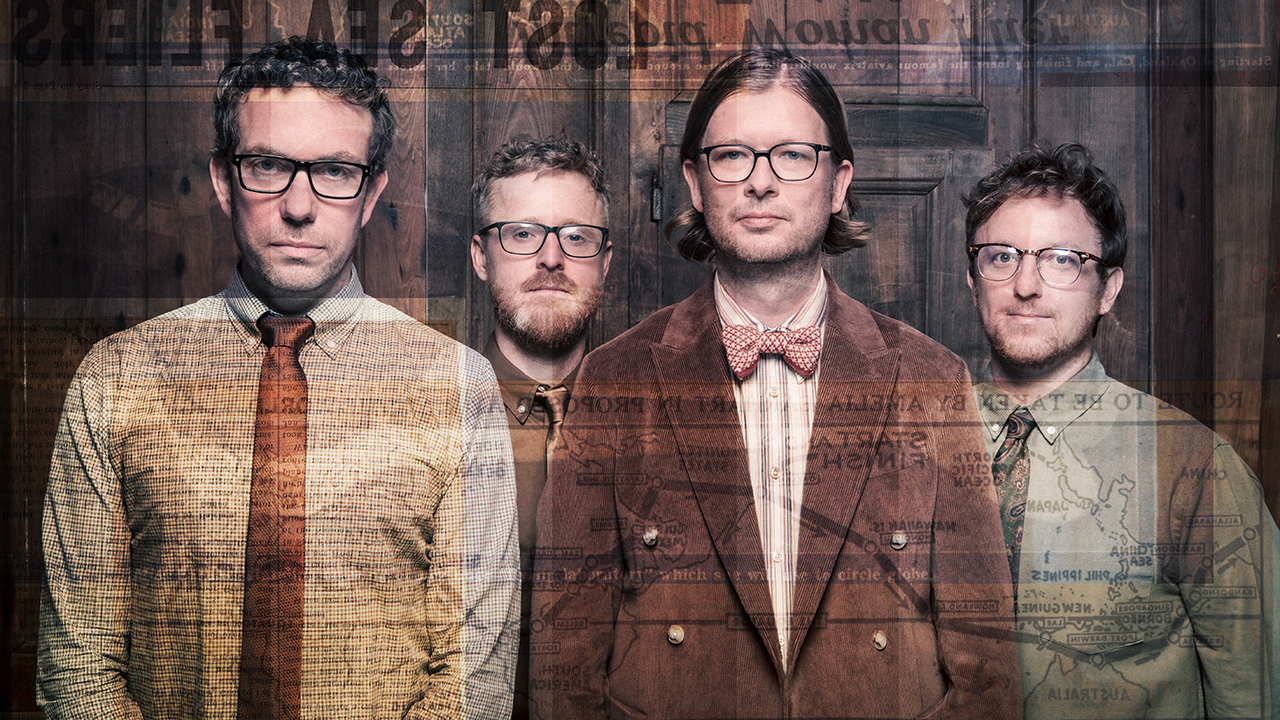

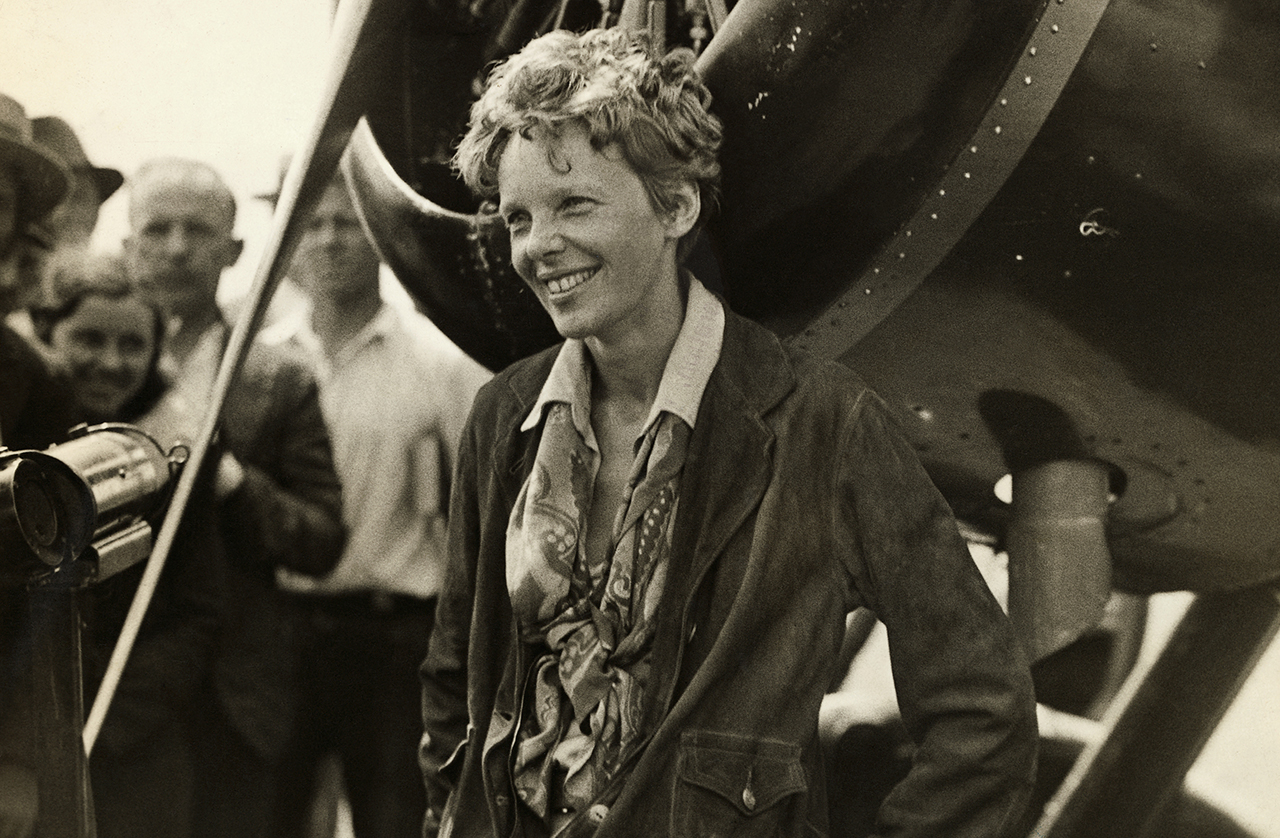
![Public Service Broadcasting - The Fun Of It [ft. Andreya Casablanca] - YouTube](https://img.youtube.com/vi/6mF9mouDnoc/maxresdefault.jpg)

![Public Service Broadcasting - The South Atlantic [ft. This Is The Kit] - YouTube](https://img.youtube.com/vi/OUh1xKJt8co/maxresdefault.jpg)



